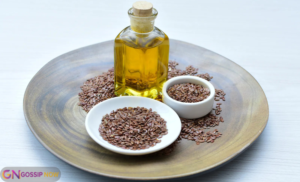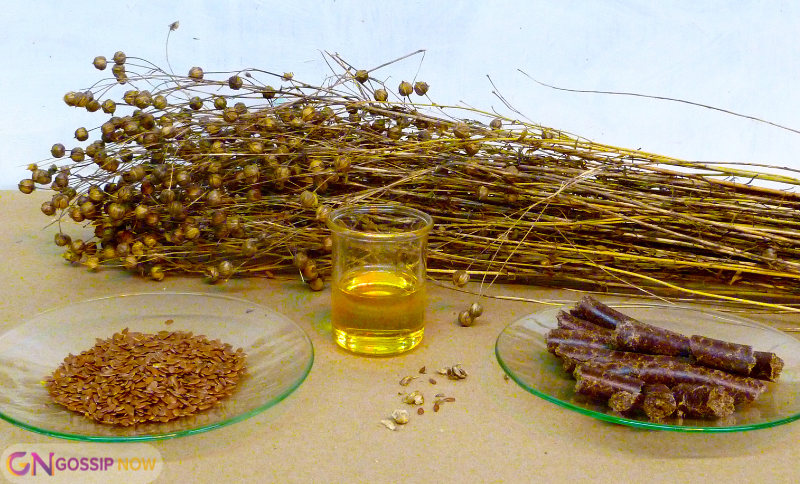When it comes to natural oils with a long-standing reputation for versatility, linseed oil stands out. Not only is it derived from the humble flaxseed, but it also serves countless purposes in woodworking, painting, and even food preparation. Whether you’re a DIY enthusiast, artist, or someone curious about natural finishes, you’ve likely come across linseed_oil more than once. In fact, linseed_oil is a staple in many homes and workshops for good reason.
Right from its raw form to the more commonly used boiled linseed oil, there’s a lot to unpack. So, let’s take a deep dive into what linseed_oil really is, why it’s so popular, and how you can use it effectively in your projects.
What Is Linseed Oil?

To begin with, linseed_oil comes from flax seeds. After drying the seeds, producers press them to release a golden-colored oil. This oil offers protective, hardening, and preservative qualities. People have used it for centuries in wood treatment, paint mixing, and even food, especially in its purest form.
In other words, linseed_oil serves as a multi-use, plant-based product with practical applications in construction, art, and health — all wrapped up in one bottle.
Types of Linseed Oil
Although it may seem like all linseed_oil is the same, there are actually two main types:
1. Raw Linseed Oil
As the name suggests, raw linseed oil is unprocessed and completely natural. It takes much longer to dry, sometimes up to several days. Because of this, it’s typically used in applications where drying time isn’t critical — like treating wooden surfaces that don’t require immediate handling.
Key Traits:
-
100% natural
-
Slow drying
-
Deeper penetration into wood
2. Boiled Linseed Oil
On the other hand, boiled linseed_oil isn’t literally boiled. Instead, it contains drying agents (often metallic salts) that help it cure much faster. This makes it ideal for woodworking projects where time is of the essence.
Advantages:
-
Dries within hours, not days
-
Popular for finishing furniture and tools
-
Provides a rich, slightly glossy look
So, when comparing raw linseed_oil vs boiled linseed_oil, it really depends on your needs. Are you looking for faster drying or a more natural product?
Linseed Oil on Wood: Why It’s a Favorite
Without a doubt, applying linseed_oil on wood is one of its most popular uses. This oil not only enhances the natural grain of the wood but also protects it from moisture, wear, and aging.
Benefits of Using Linseed Oil on Wood:
-
Penetrates deeply, nourishing from within
-
Gives wood a warm, natural finish
-
Protects against water damage and cracking
-
Easy to apply with a cloth or brush
Because of these reasons, it’s commonly used on:
-
Cutting boards (raw linseed_oil only)
-
Wooden furniture
-
Outdoor decks
-
Musical instruments
Nevertheless, it’s important to reapply the oil periodically to maintain protection and shine.
Is Linseed Oil Food Safe?
Now you may be wondering, is linseed_oil food safe? That’s an important question — especially if you’re planning to use it on surfaces like butcher blocks, salad bowls, or cutting boards.
Here’s the truth:
-
Raw linseed oil (100% pure, cold-pressed) is generally food safe.
-
Boiled linseed oil, however, is not food safe due to the added chemical driers.
As a result, if your project involves direct contact with food, always choose raw linseed_oil or food-grade alternatives like mineral oil or walnut oil.
What Is Linseed Oil Used For?
Thanks to its incredible versatility, linseed_oil has a wide range of practical applications. Let’s explore the most common uses:
1. Wood Preservation
Used both indoors and outdoors, linseed_oil on wood creates a natural barrier against moisture, weather, and insects.
2. Oil Painting Medium
Artists often mix linseed_oil paint to adjust consistency, increase gloss, and improve drying times. It enhances flow and smoothness on canvas.
3. Rust Prevention
When applied to metal tools and surfaces, boiled linseed_oil helps prevent rust and corrosion — particularly in high-humidity areas.
4. Concrete Treatment
Believe it or not, linseed_oil is also used to seal concrete surfaces. It reduces dusting and protects from spills.
5. Leather Treatment
It’s occasionally used to soften and preserve natural leather goods.
In short, what is linseed_oil used for? Just about everything you can imagine in woodworking, painting, and even maintenance!
How to Apply Linseed Oil: Step-by-Step
To get the best results, follow this simple guide for applying linseed_oil:
Step-1: Clean the surface thoroughly
Step-2: Sand the wood lightly for smoothness
Step-3: Use a clean cloth or brush to apply a thin layer of oil
Step-4: Allow it to penetrate for 15–30 minutes
Step-5: Wipe off any excess oil with a lint-free cloth
Step-6: Let it dry fully before adding additional coats
For deeper shine and better protection, repeat the process 2–3 times over a few days.
Safety Tips When Using Linseed Oil
 Despite being natural, linseed_oil should still be used with care — especially boiled linseed_oil.
Despite being natural, linseed_oil should still be used with care — especially boiled linseed_oil.
Important Precautions:
-
Dispose of oily rags properly: They can spontaneously combust if left in a pile.
-
Ventilate your workspace: Fumes from boiled linseed_oil can be irritating.
-
Store in a cool, dry place: This preserves freshness and avoids fire hazards.
Always read product labels before use, particularly when dealing with treated or chemical-enhanced oils.
Boiled Linseed Oil on Wood: Pros and Cons
To help you decide whether to use boiled linseed oil on wood, here’s a quick breakdown:
Pros:
-
Fast drying time
-
Rich color enhancement
-
Long-lasting protection
Cons:
-
Not food safe
-
May darken lighter wood
-
Contains chemical drying agents
Overall, for furniture and decorative wood, it’s a fantastic option. However, for food surfaces, it’s best to look elsewhere.
Linseed Oil Paint: A Natural Option for Artists
Artists have used linseed_oil paint for centuries. Not only does it improve the paint’s consistency, but it also creates luminous, vibrant results on canvas.
Here’s why it’s still relevant today:
-
Helps with blending and layering
-
Slows drying for better manipulation
-
Adds a natural, glossy finish
Whether you’re painting a masterpiece or touching up old furniture, linseed_oil-based paints are both eco-friendly and effective.
Author Bio Table
| Name | Jenna Whitmore |
|---|---|
| Profession | Wood Finishing Specialist & DIY Writer |
| Expertise | Woodworking, Eco-Friendly Materials |
| Experience | 12+ Years in Sustainable Home Projects |
| Location | Portland, Oregon |
| Favorite Use | Raw linseed oil on reclaimed furniture |
Final Thoughts
All things considered, linseed_oil is truly a powerhouse in natural finishing. Whether you’re preserving a family heirloom, enhancing your artwork, or sealing a deck, this plant-based oil gets the job done beautifully. While raw linseed_oil offers a more natural and food-safe route, boiled linseed_oil provides faster drying times and durability.
Because of its wide range of uses and eco-friendly nature, it continues to be a top choice for professionals and hobbyists alike. Moreover, understanding the differences between raw and boiled versions helps ensure you choose the right one for your project.
So next time you’re wondering what is linseed_oil used for, remember — it’s far more than just a wood finish. It’s a versatile, time-tested tool that brings out the best in everything it touches.
FAQs
1. What exactly is linseed oil?
To clarify, linseed_oil is a natural oil extracted from flax seeds, often used in woodworking, painting, and metal treatment.
2. What’s the difference between raw and boiled linseed oil?
In simple terms, raw linseed_oil dries slowly and is food safe, while boiled linseed_oil contains additives that speed up drying but are not safe for food surfaces.
3. Is linseed oil safe for use on cutting boards?
Yes, but only if you use raw, food-grade linseed_oil. Therefore, avoid boiled versions for kitchen items.
4. Can I use boiled linseed oil on outdoor furniture?
Absolutely! In fact, it’s an excellent choice because of its fast-drying and weather-resistant properties.
5. How long does linseed oil take to dry?
Generally, raw linseed_oil takes up to 3 days, while boiled linseed_oil may dry in just 6–24 hours depending on conditions.
6. Does linseed oil change the color of the wood?
Yes, in most cases it deepens the color and enhances grain patterns, giving wood a richer, warmer appearance.






